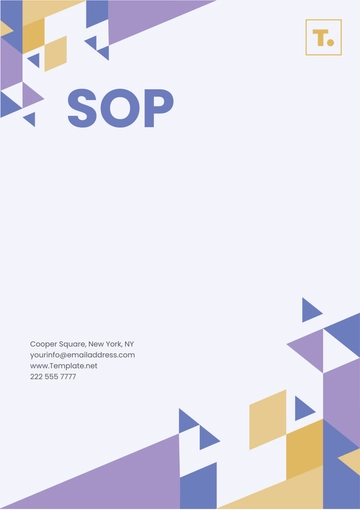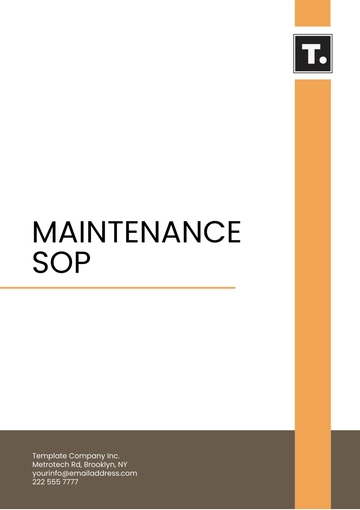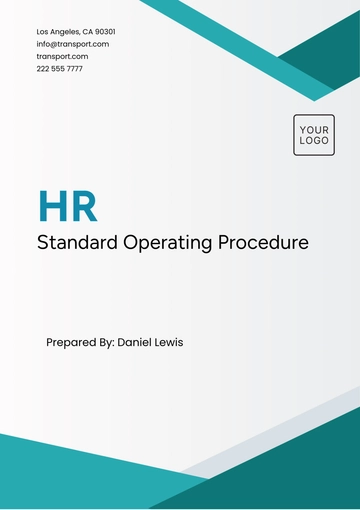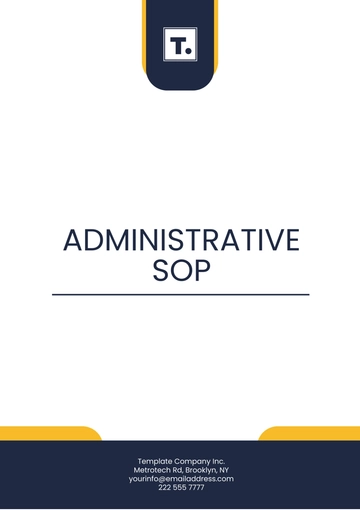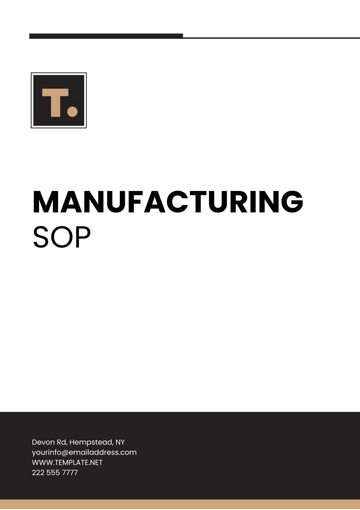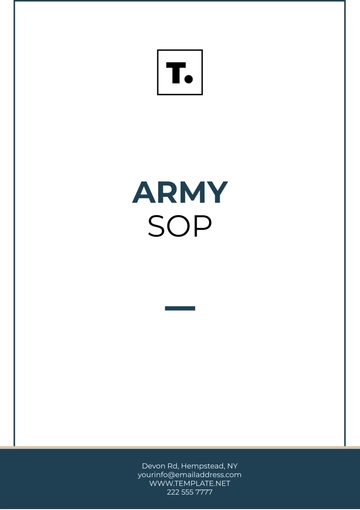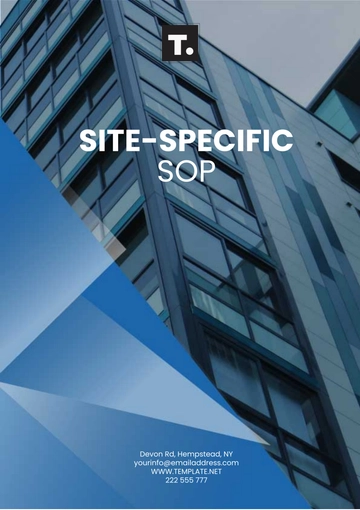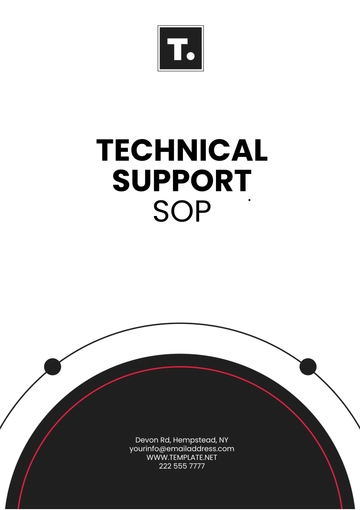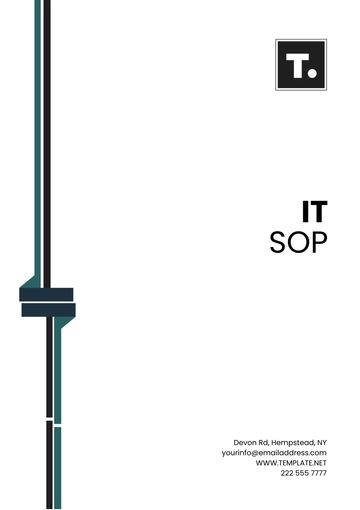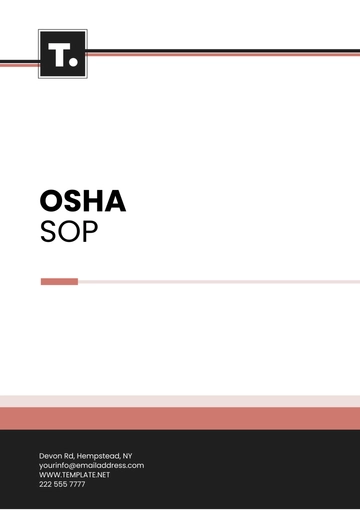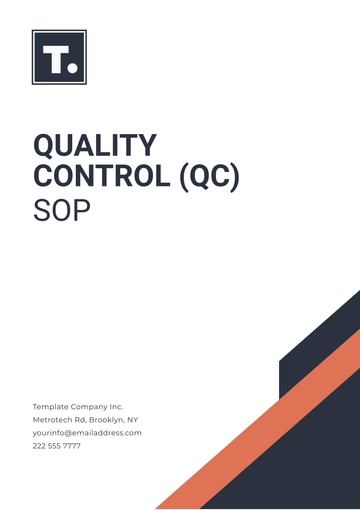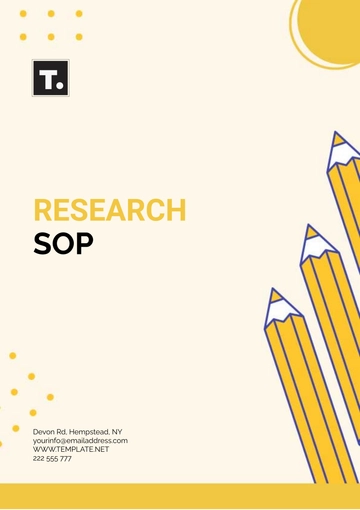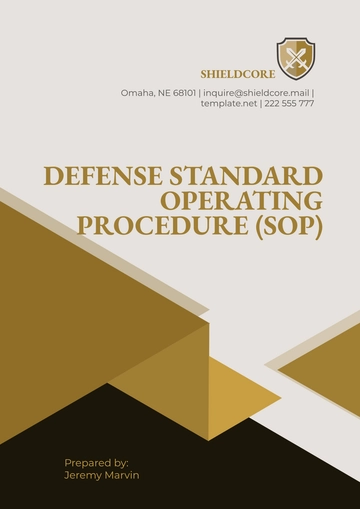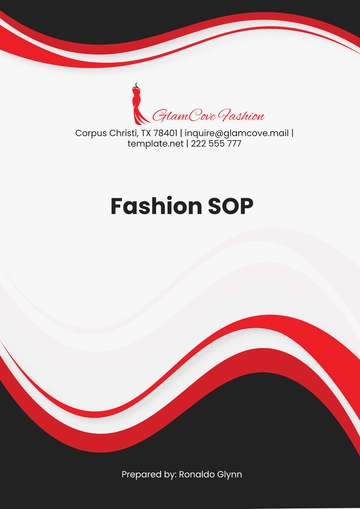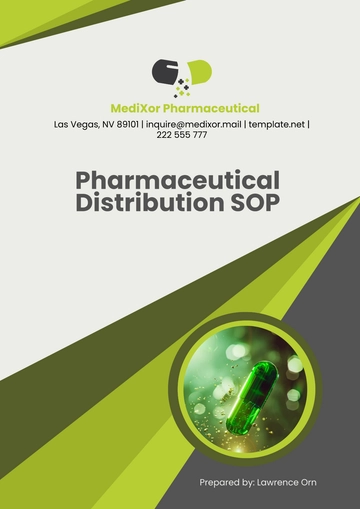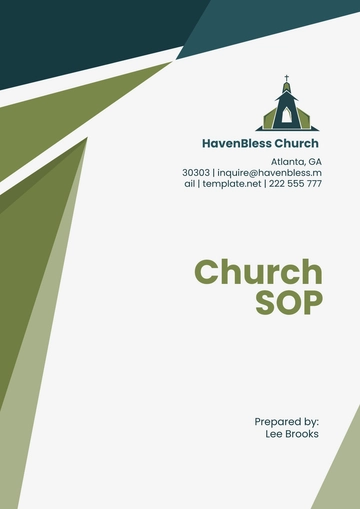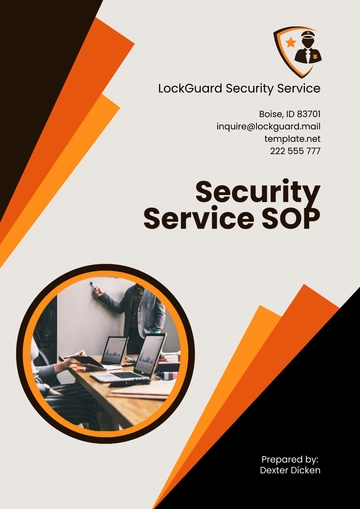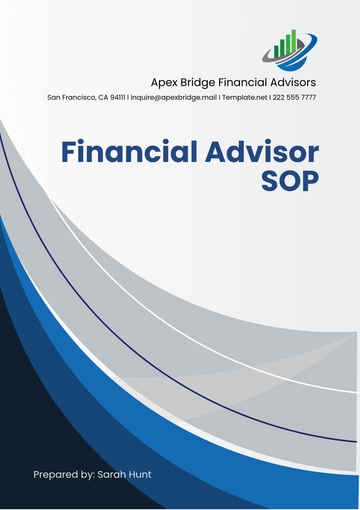Free Compliance SOP
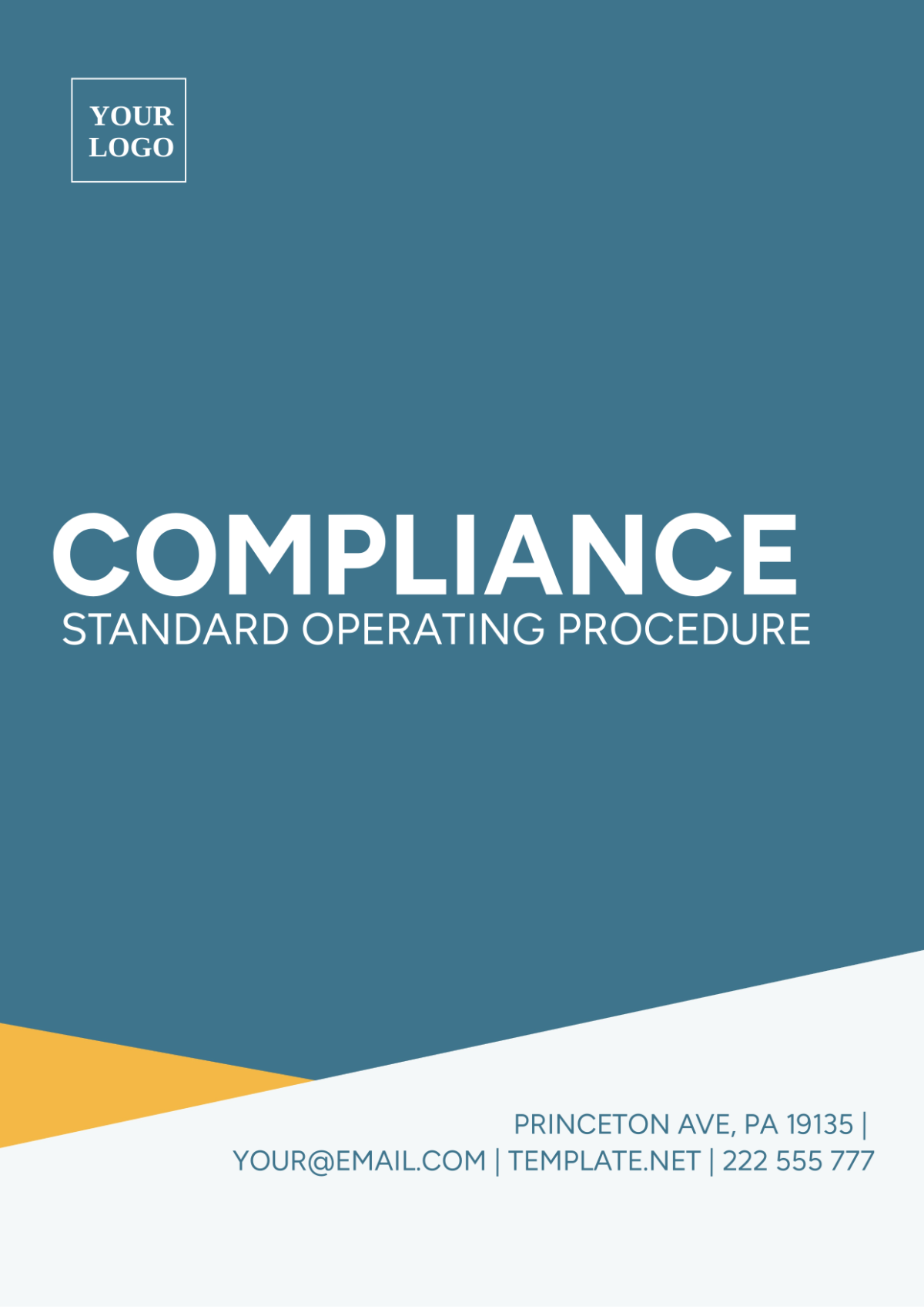
I. Introduction
I.I Purpose:
This SOP aims to standardize the compliance processes within [YOUR COMPANY NAME], ensuring adherence to regulatory requirements, industry standards, and internal policies while maintaining efficiency and integrity.
I.II Scope:
This document applies to all employees involved in compliance activities within the Compliance Department.
I.III Applicability:
This SOP is mandatory for all relevant staff and departments within [YOUR COMPANY NAME] engaged in compliance activities.
II. Definitions
A glossary of terms and abbreviations used in this SOP.
Regulatory Compliance: Adherence to laws, regulations, and standards relevant to the organization's industry and operations. It ensures that the organization conducts its activities by applicable laws and regulations.
Internal Policies: The rules and guidelines established by the organization to govern its operations and conduct. These policies are designed to promote ethical behavior, mitigate risks, and ensure consistency in decision-making processes.
III. Responsibilities
Outline the roles and responsibilities associated with the compliance process covered by the SOP.
III.I Compliance Officer
The Compliance Officer holds the overall responsibility for the implementation and adherence to this SOP. They oversee the development and execution of compliance strategies, policies, and procedures. Specific responsibilities include:
Developing and maintaining compliance policies and procedures.
Providing guidance and training to employees on compliance matters.
Monitoring regulatory changes and ensuring that the organization remains up-to-date with relevant requirements.
Conducting regular compliance audits and assessments.
Investigating compliance violations and implementing corrective actions.
Reporting compliance issues to senior management and regulatory authorities, if necessary.
III.II Department Managers
Department Managers have specific duties and tasks assigned under this SOP. They play a crucial role in ensuring that their respective departments comply with regulatory requirements and internal policies. Responsibilities include:
Implementing and enforcing compliance policies and procedures within their departments.
Providing necessary resources and support to ensure compliance.
Monitoring and documenting compliance activities within their departments.
Reporting compliance-related issues or concerns to the Compliance Officer.
Participating in compliance training and awareness programs.
Collaborating with the Compliance Officer to address compliance gaps and implement corrective actions.
IV. Procedure
A detailed, step-by-step guide on executing the compliance process, including any relevant sub-processes.
IV.I Compliance Assessment
Conduct regular assessments to identify areas of non-compliance with regulatory requirements and internal policies.
Document findings and prioritize corrective actions based on the assessment results.
IV.II Policy Implementation
Develop and implement policies and procedures to address identified compliance gaps and mitigate risks.
Communicate policy changes and updates to relevant stakeholders through channels such as meetings, emails, training sessions, or other appropriate means, and ensure their understanding and adherence.
IV.III Training and Awareness
Provide comprehensive training programs to educate employees on relevant laws, regulations, and internal policies.
Promote a culture of compliance through ongoing awareness campaigns and communication initiatives.
IV.IV Monitoring and Reporting
Establish monitoring mechanisms to track compliance with regulatory requirements and internal policies on an ongoing basis.
Generate regular compliance reports to assess performance, identify trends, and address areas of concern.
V. Documentation and Records
Details on the documentation required for the compliance process, including templates and storage information.
V.I Policy Documents
Policy documents encompass copies of all relevant laws, regulations, and internal policies. These documents serve as the foundation for the organization's compliance efforts and guide employees in understanding their obligations and responsibilities. They include:
Laws and Regulations: Copies of applicable laws, regulations, and standards that govern the organization's industry and operations. Examples include government regulations, industry standards, and legal requirements.
Internal Policies: Documents outlining the rules, guidelines, and procedures established by the organization to govern its operations and conduct. These policies cover areas such as ethics, privacy, data security, and financial management.
Storage Information: Policy documents should be stored in a secure and easily accessible location, such as a centralized document management system or a dedicated compliance repository. Access to these documents should be restricted to authorized personnel to prevent unauthorized modifications or disclosures.
V.II Compliance Reports
Compliance reports comprise records of compliance assessments, findings, and corrective actions taken. These reports provide insights into the organization's compliance performance, identify areas of improvement, and track progress over time. They include:
Compliance Assessments: Reports documenting the results of compliance assessments, including findings related to regulatory requirements and internal policies.
Findings and Observations: Records of compliance-related findings, observations, and non-conformities identified during assessments or audits.
Corrective Actions: Documentation of corrective actions taken to address compliance gaps, mitigate risks, and prevent recurrence of non-conformities.
Storage Information: Compliance reports should be systematically organized and stored in a secure and centralized location. They may be maintained electronically or in hard copy format, depending on organizational preferences and regulatory requirements. Access to compliance reports should be restricted to authorized personnel involved in compliance management and oversight.
VI. Review and Revisions
Information on how the SOP will be reviewed and updated, including who is responsible for the review and how changes will be communicated.
Review Frequency: The SOP should be reviewed annually or following any major changes in regulatory requirements or internal policies.
Revision History:
Revision Number | Date | Description of Changes | Revised By |
|---|---|---|---|
1 | [DATE] | Initial Creation of SOP | [YOUR NAME] |
2 | [DATE] | Updates to reflect changes in procedures. | [YOUR NAME] |
3 | [DATE] | Revised policy implementation procedures. | [YOUR NAME] |
4 | [DATE] | Updated compliance assessment section. | [YOUR NAME] |
VII. Approval
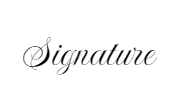
[YOUR NAME]
Compliance Officer
[APPROVAL DATE]
- 100% Customizable, free editor
- Access 1 Million+ Templates, photo’s & graphics
- Download or share as a template
- Click and replace photos, graphics, text, backgrounds
- Resize, crop, AI write & more
- Access advanced editor
Ensure regulatory adherence with our Compliance SOP Template, available on Template.net. This editable and customizable template provides a structured framework for implementing and monitoring compliance measures within your organization. Editable in our AI tool, tailor it to your specific industry regulations and internal policies effortlessly.



